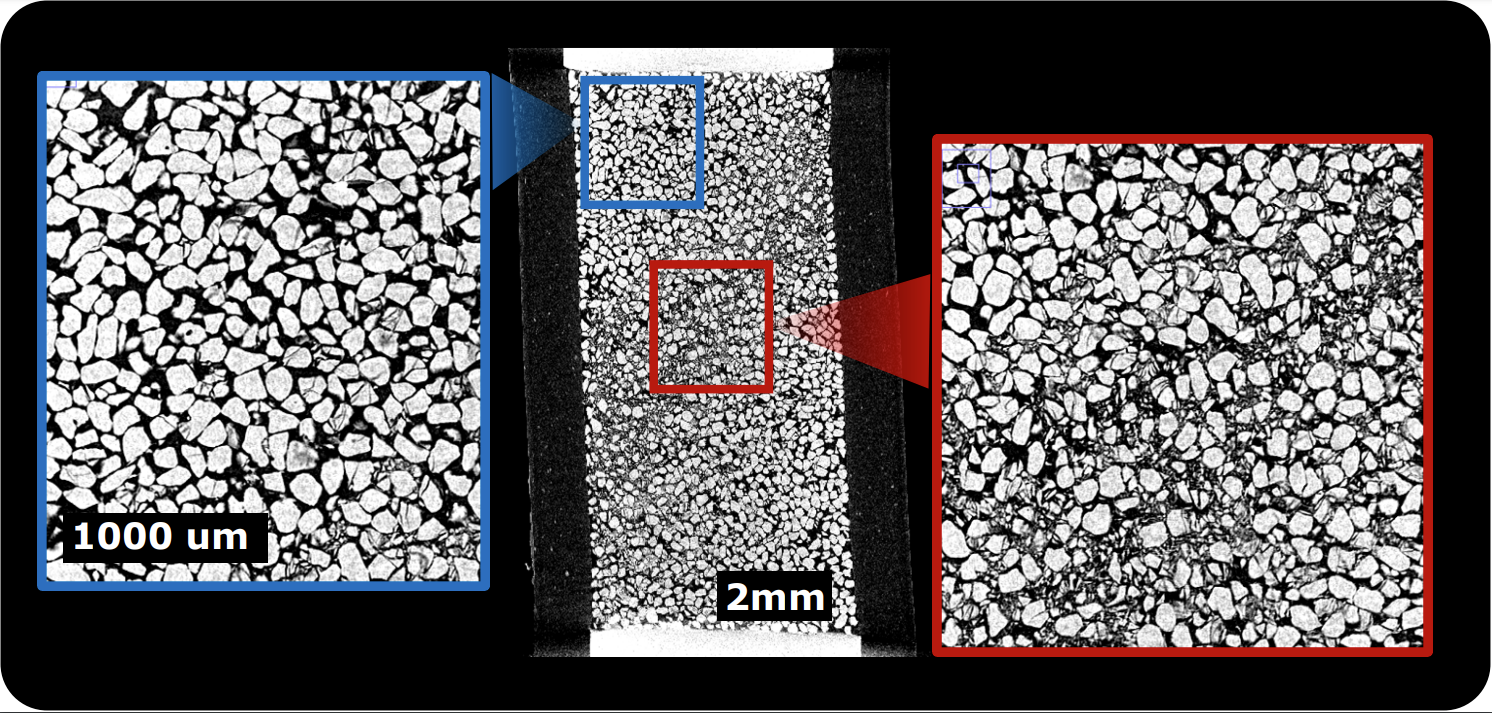Micromechanics and Strain Localization in Sand in the Ductile Regime

Critical processes including seismic faulting, reservoir compartmentalization, and borehole failure involve high-pressure mechanical behavior and strain localization of sedimentary rocks such as sandstone. Sand is often used as a model material to study the mechanical behavior of poorly lithified sandstone. Recent studies exploring the multi-scale mechanics of sand have characterized the brittle, low-pressure regime of behavior; however, limited work has provided insights into the ductile, high-pressure regime of behavior via in-situ measurements. Critical features of the ductile regime, including grain breakage, grain micromechanics, and volumetric strain behavior therefore remain under-explored. Here, we use a new high-pressure triaxial apparatus with in-situ x-ray tomography to provide new insights into deformation banding, grain breakage, and grain micromechanics in Ottawa sand subjected to triaxial compression under confining pressures between 10 and 45 MPa. We observed strain-hardening at pressures above 15 MPa and strain-neutral responses at pressures below 15 MPa. Compacting shear bands and grain breakage were observed at all pressures with no significant variation due to grain size, except for minor increases in breakage in less-rounded sands. Grain breakage emerged at stress levels lower than the assumed yield threshold and more intense breakage was associated with thinner deformation bands. Contact sliding at inter-grain contacts demonstrated a bifurcation into a bimodal distribution, with intense sliding within deformation bands and reduced but non-negligible sliding outside of deformation bands, suggesting that off-band zones remain mechanically active during strain hardening.
Download from Researchgate.com